- Home
- Steve Vernon
The Lunenburg Werewolf Page 7
The Lunenburg Werewolf Read online
Page 7
When the snow started falling it made things worse. It was a soft-looking snow, the kind that some people call pretty. But looking at a pretty snowfall and standing out there ankle deep in the cold wet stuff are two completely different things. Aunt Minnie knew that it was several kinds of foolish to keep digging out here with the snow piling up the way it was—but she also knew that there was no way at all that she was going to leave her poor cat without a decent burial.
By the time Aunt Minnie had finished digging the grave, the snow had nearly covered Mr. Coal Shadow. She scooped him up and whispered something in his ear, and then she placed Mr. Coal Shadow in the grave, wrapped in the shroud of his favourite green plaid kitty blanket. She put his catnip mouse and his dish in the grave with him. Then she sang three hymns, shivering a little with the cold, before she finally buried the cat once and for all.
She walked back to her front door slowly, leaning on the shovel like it was a crutch. The tears had icicled her eye lashes up so that she could hardly see, but she knew her way just the same.
She tapped on her door as if she were coming to somebody’s house for tea. Then she went inside and put the big iron kettle on the stove and sat down in her rocking chair to wait.
Only she had worked herself far too hard. The kettle had just started to whistle when death’s cold hand reached out and stilled Aunt Minnie’s heart.
The kettle had whistled itself dry by the time Aunt Minnie’s niece tapped on the door and let herself in. When she stepped into the kitchen, she saw her Aunt Minnie sitting in her rocking chair with a shawl about her shoulders and a quilt upon her lap. And upon the quilt was the old black cat.
The old cat purred contentedly.
“Well at least she didn’t die alone,” her niece said.
When she looked again the cat was gone.
In the bustling Cumberland County town of Amherst, back in the late nineteenth century a tale of terror unfolded—a tale so terrible that it is remembered to this very day. This story has been told and retold in volumes of ghostly folklore and newspaper articles across the continent. It is so well loved and wholly feared that it has been immortalized in the streets of Amherst with a gigantic two-storey mural painted by well-known Nova Scotia artists Susan Tooke and Richard Rudnicki.
The story is known as the Great Amherst Mystery, and it pertains to the haunting of one Esther Cox.
Esther’s Early Life
Esther was born in the town of Upper Stewiacke. Her mother died three weeks after her birth, due to complications from the labour. At birth Esther weighed a mere five pounds. Soon after she was born, Esther’s father, Archibald T. Cox, remarried and moved to Maine with his new family, leaving Esther and her older sister, Jane, in the care of their grandmother.
By 1848, Esther’s grandmother had died, and she and Jane were living in a crowded two-storey house on Princess Street in Amherst, Nova Scotia. The bills were primarily paid by the girls’ uncle, Daniel Teed, a foreman in the Amherst Shoe Factory. In addition to Uncle Daniel and Esther and Jane, the house also sheltered Daniel’s wife, Olive, and their two sons, five-year-old Willie and one-year-old George.
Esther was short and rather stout. Her eyes were grey with flecks of blue. Her hair was a curly dark brown and she wore it short to allow for easy maintenance. Esther was quiet and fairly helpful and prone to daydreaming. Her demeanour was pleasant and she was quite popular with the local youth.
However, at the age of eighteen Esther Cox’s life became pure hell.
The Trouble Begins
The trouble first started one night in early September, when Esther awakened Jane in the bed that they shared.
“There are mice in the bed,” Esther said. “I can hear them scratching.”
Jane listened carefully, only to discover that the scratching noises weren’t actually coming from the bed itself, but rather from beneath it.
“It’s the box of quilt makings under the bed,” Jane said. “I bet you anything those mice are building a nest in it.”
The two of them gingerly slid the old cardboard dress box crammed full of quilting patches out from beneath their bed and into the middle of the floor.
“Open it,” Jane said.
“You first,” Esther replied.
All at once the box lid flew open and quilt patches began to flutter about the room like tiny flying carpets. The box bounced repeatedly as if someone were slamming it upon the floorboards. At the same time, the quilt flew from the bed and draped itself over Jane and Esther’s heads. Every time they pulled the quilt off, it folded itself back over their heads as if someone were shaking and draping it in midair.
At this point Uncle Daniel rushed into the room. “What’s wrong?” he asked.
By this time the disturbance had completely subsided. All that Uncle Daniel could see was a pair of young girls sitting on their bedroom floor with the bed quilt tented over their heads.
“Some of us need to work in the morning,” he grumbled, going back to his bedroom with a rueful chuckle. He was a good man and did his best to see the funny things in life.
Only it wasn’t so funny later that evening when the sound of Esther’s panic-stricken screams woke the entire household.
“I’m dying!” she shrieked. “I’m dying!”
Jane leaped from the bed as the family rushed in. They all stared at Esther in absolute terror. Esther’s hair stood straight out as if she had been struck by lightning. Her skin was blotched the colour of blood. Her flesh began to bloat and swell and she could barely manage to catch her breath.
“I’m dying,” she repeated.
“It’s a fever,” her uncle decided.
Only it was no mere fever. A fever wouldn’t explain all the noise and commotion. Loud raps and bangs echoed through the room as if someone were beating on the walls from the inside with a massive hammer. The quilt again began to turn itself over as if some invisible hand was trying its hardest to unmake the bed.
The family watched in horror until morning, when the event culminated in what sounded like a loud clap of thunder, right in the bedroom. It left behind a stench of something like sulphur. The odd noises finally subsided, the quilt ceased its antics, and Esther regained her normal health. She caught her breath, the unwholesome bloating of her limbs and flesh seemed to pass, and her skin resumed its normal pigmentation. For a moment, all was calm.
A Message from Beyond
As the days went on, Esther’s health seemed to worsen. The nightly visitations continued. The banging and thumping that tormented her grew bolder.
Finally, four days later, a doctor was summoned to Esther’s room. He might have been called earlier, but ready cash was hard to come by in those days and doctors cost a lot of money. “She’s clammy and sweating,” the doctor said. “But she doesn’t seem to have much in the way of a fever.”
He sounded a little impatient. He had listened to the family’s story and privately considered it to be nothing more than foolish ranting. Still, he was a doctor and he was honour-bound to do his best to help the poor girl.
As he continued his examination, the strange banging sound began to echo through the room. There was also a scratching noise that sounded as if someone were working a very sharp set of nails across a blackboard.
“Look,” Uncle Daniel said, pointing up at a spot on the wall just above Esther’s headboard. Words were beginning to emerge on the wall, as if someone were scratching them out from beneath the plaster. The group watched in cold terror as the message began to emerge:
ESTHER COX, YOU ARE MINE TO KILL.
The Situation Worsens
Over the next four months the conditions grew worse. The hammering noises began to move throughout the household. At one point it sounded as if a 150-pound man were jumping upon the roof. Another time Uncle Daniel’s wife stared in amazement and terror as a barrel of potatoes was flung arou
nd the house’s basement. The potatoes rolled and chased her about the cellar.
In December of that year, Esther, worn down by her continuing nightly ordeal, was struck with a severe case of diphtheria. She was bedridden for two solid weeks and the family enjoyed two weeks of uninterrupted rest. The diphtheria seemed to ward off the paranormal activity.
Following her recovery, Esther journeyed to Sackville, New Brunswick, to stay with a married aunt. No episodes of paranormal activity were reported in the Sackville residence.
However, in January, when Esther returned to Amherst, things resumed with a vengeance. Along with the banging and the scratching and the moving furniture, lit matches began to materialize in mid-air, usually just below ceiling level. As they materialized they dropped to the floor, still lit. The matter became even more serious when Esther reported hearing voices whispering to her that the house would burn down to the ground before the month was over.
The family had to face facts. Esther had to go.
The Whites, a neighbouring couple who needed an extra set of hands around their farm, took Esther in but had to return her after tools began flying around wherever she went. Even the local Baptist church could provide no peace for poor Esther, as the mysterious pounding and scratching followed her even into those sacred walls.
Esther was losing hope. Something had to be done—and fast.
Who You Gonna Call?
In March 1878, Esther was invited to stay at the Saint John, New Brunswick, home of Captain James Beck—a man with a keen interest in the paranormal. In addition to Captain Beck, several scientists, a handful of amateur occultists and investigators of unearthly phenomena, and a trio of local clergymen were invited along on a sort of nineteenth century “ghost-busting” operation.
The team studied Esther for some time. She would sit on a wooden chair secured to a thick rug, eliminating any possibility of her making the banging sound with the legs of the chair. The rapping and banging continued in spite of the precautionary carpet. A pot of water was placed beside the rug. The water immediately began to boil, in spite of the fact that there was no fire anywhere close to the pot.
By now Esther was comfortable conversing with the banging spirits. The spirits, if spirits they were, would answer onlooker’s questions. If someone asked, “How old am I?” the spirits would bang out the proper number. She knew the names and personalities of each of the spirits that haunted her. Above all else, Esther maintained that any vandalism or misdoings were strictly the fault of the spirits.
“None of it is my doing,” she swore. “The spirits are doing it all.”
Shortly after she arrived at Captain Beck’s home, Esther met Walter Hubbell, an American actor on tour through the Maritimes. Hubbell saw opportunity in Esther’s sad plight, and convinced her to let him study her further in her own home.
Hubbell became quite close with Esther and her family. Uncle Daniel and Aunt Olive were quite taken with the dashing young actor and he won both the trust and the heart of young Esther Cox. However, the spirits who haunted Esther seemed less than fond of Hubbell. In fact, whenever Hubbell entered Esther’s bedroom, furniture would begin to shift wildly and objects he was holding would be jerked from his hands. Once a large butcher knife flew at him, barely missing his throat.
In June 1879, Hubbell convinced Esther to accompany him on a theatrical tour. He won Uncle Daniel and Aunt Olive over with his talk of how much money they were going to make for Esther.
Hubbell booked Esther in at theatres all over the Maritimes so the public could come witness the paranormal phenomenon with their own eyes. However, their first performance, in Pictou, was a total bust. Esther’s spirits suffered from stage fright—she sat there on her chair but nothing happened. In the end people began throwing objects at the stage. They booed loudly and shouted, “Fake! Fake!” A riot broke out and the theatre was nearly destroyed. Esther’s all-too-short theatrical career came to a crashing halt then and there.
After that, Hubbell and Esther had a falling out. Hubbell went on to write and publish a short dissertation entitled “The Great Amherst Mystery”—a book that was quite successful and made him an awful lot of money. Surprisingly enough, Esther didn’t see any of the resulting profits.
The Story Continues
After Hubbell’s abrupt departure, Esther managed to find sanctuary in the home of a local farmer named Arthur Davis—a man who was certain that he could learn to put up with the banging, the moaning, and the occasional moving furniture. However, Davis could not put up with having his barn burn down, which is exactly what happened a short time after Esther moved in. Arthur Davis was not inclined to write the barn-burning off as the work of spirits. Instead, he charged Esther with arson.
Esther was tried and convicted and sentenced to four months in jail. However, the townsfolk felt sorry for Esther’s situation and convinced local authorities to release her after she had served only a single month of jail time. No disturbances were reported while she was serving her jail sentence.
After her release from jail, Esther was taken in by yet another household, the Van Amburghs. There, she lived in mostly untroubled peace. She found her strength through continual prayer and read the Holy Bible every day. She was still plagued by the occasional spirit—pieces of furniture sometimes slid and moved and her bedding would periodically fly off her bed—but none of the events were as frequent or powerful as before. Things had begun to look up for the girl.
In time Esther fell in love and married one Mr. Adams of Springdale, Nova Scotia. She outlived Adams and was then married a second time, to a Mr. Shanahan of Brockton, Massachusetts.
For whatever reason, the mysterious events seemed to settle as she grew into her life. There were still occasional outbursts of activity, but nothing to the extent of her years in Amherst.
Esther Cox Shanahan died peacefully in 1912 at the age of 52. The house on Princess Street still stands to this very day.
The new Lunenburg Academy was first opened on November 7, 1895. It was built to replace the original academy, which had been located at the heart of the town but was destroyed by a chimney flue fire in 1893. The ground floor of the new academy building contained six large classrooms with separate cloakrooms for boys and girls. The second floor held six more classrooms, an equal number of cloakrooms, a laboratory, and a library. There was a large assembly hall on the third floor, capable of seating over four hundred individuals. The ceilings throughout the building were of white wood and were beautifully panelled. The floors and wainscotting were of white birch while the rest of the interior was finished in a mixture of ash and birch. Four towers adorned the building. In one of these towers hung a large bell, which weighed over six hundred pounds and which was cast at the Lunenburg Iron Company.
According to the Educational Review of February 1896, the new Lunenburg Academy “occupied one of the finest and most commanding sites in the Province, being visible for many miles around.” The hill that the academy stood upon was originally known as Gallows Hill because it was where hangings were performed throughout the early years of Lunenburg’s history.
There are a great many ghost stories surrounding the Lunenberg Academy. Some people say that the ghost of a retired teacher keeps watch on the school from an eerie spectral rocking chair, and they claim that you can hear her rocking chair squeaking and creaking on certain nights of the year. There has also been talk of a ghost that lurks in the basement washroom, but as of yet these rumours remain unsubstantiated. Others swear that the ghost of Peter Mailman, a convicted wife-murderer and the last man to be hung on Gallows Hill, still walks this area. Some folks claim that they have seen his ghost in the old berry-picking ground, still carrying the axe that he used to slay his loving wife.
It is natural to hear such stories concerning such a very old building as the academy, but the school’s location likely also plays a part in its paranormal popularity. Surrounding the academ
y on three sides is the Hillcrest Cemetery, the second-oldest cemetery in the area, with grave markers dating back as far as 1761.
A stone’s throw from the academy stands the gravestone of Sophia L. McLachlan. It is here, in the shadow of the Lunenburg Academy, high atop Gallows Hill, that we find Lunenburg’s most intriguing ghost story, a fascinating tale of false accusation and bitter mortal grief.
A Fatal Broken Heart
Sophia had certainly seen her share of hardship. Her father, Joseph, and her grandfather, Benjamin, made a modest living building dories and whalers. Sophia’s father’s income was eaten up by the demands of his large family, which also included his wife, Lavinia, and Sophia’s five younger sisters: Elizabeth, Eldora, Ella May, Luthia, and Atholea. The entire family lived in a small rented cottage on Pelham Street, just a short distance from Joseph’s family home.
On October 12, 1878, tragedy struck the family when six-year-old Ella May died of scarlet fever. Two days later, the fever took three-year-old Atholea as well. At thirteen years of age, Sophia was devastated by the family loss. As the oldest child, she had given freely of herself, spending many long hours taking care of her sisters. At this point she felt as much like a mother as a sister could.
Sophia helped out her family the only way she knew how, taking a position as an apprentice to a well-known local dressmaker by the name of Anne Trask. Mrs. Trask was a single woman raising two children, thirteen-year-old Charles and eleven-year-old Nellie.
Sophia was a hard-working girl and she proved herself to be both capable and industrious. Above all else, Sophia was trustworthy. Mrs. Trask came to count heavily on her to take care of the shop whenever she found the need to run errands around the town. It was after one such excursion, however, that Mrs. Trask came back to the shop to find ten dollars missing from the cash drawer.

 Flash Virus: Episode One
Flash Virus: Episode One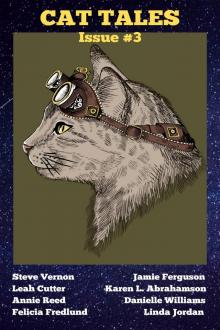 Cat Tales Issue #3
Cat Tales Issue #3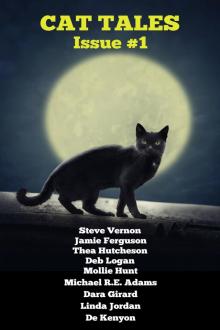 Cat Tales Issue #1
Cat Tales Issue #1 A Fine Sacrifice
A Fine Sacrifice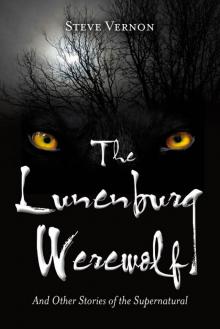 The Lunenburg Werewolf
The Lunenburg Werewolf October Tales: Seven Creepy Stories (Stories to SERIOUSLY Creep You Out Book 1)
October Tales: Seven Creepy Stories (Stories to SERIOUSLY Creep You Out Book 1)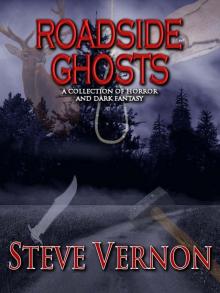 Roadside Ghosts: A Collection of Horror and Dark Fantasy (Stories to SERIOUSLY Creep You Out Book 3)
Roadside Ghosts: A Collection of Horror and Dark Fantasy (Stories to SERIOUSLY Creep You Out Book 3) Haunted Harbours
Haunted Harbours Wicked Woods
Wicked Woods Two Fisted Nasty: A Novella and Three Short Stories (Stories to SERIOUSLY Creep You Out Book 2)
Two Fisted Nasty: A Novella and Three Short Stories (Stories to SERIOUSLY Creep You Out Book 2) A Hat Full of Stories: Three Weird West Tales (Stories to SERIOUSLY Creep You Out Book 9)
A Hat Full of Stories: Three Weird West Tales (Stories to SERIOUSLY Creep You Out Book 9) Bad Valentines: three twisted love stories (Stories To SERIOUSLY Creep You Out Book 7)
Bad Valentines: three twisted love stories (Stories To SERIOUSLY Creep You Out Book 7) Do-Overs and Detours - Eighteen Eerie Tales (Stories to SERIOUSLY Creep You Out Book 4)
Do-Overs and Detours - Eighteen Eerie Tales (Stories to SERIOUSLY Creep You Out Book 4)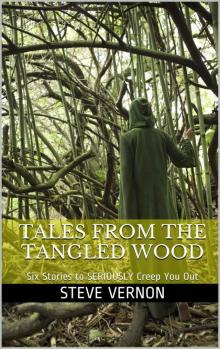 Tales From The Tangled Wood: Six Stories to SERIOUSLY Creep You Out
Tales From The Tangled Wood: Six Stories to SERIOUSLY Creep You Out Sinking Deeper
Sinking Deeper Bad Valentines 2: Six Twisted Love Stories (Stories to SERIOUSLY Creep You Out Book 5)
Bad Valentines 2: Six Twisted Love Stories (Stories to SERIOUSLY Creep You Out Book 5) Big Hairy Deal
Big Hairy Deal Maritime Murder
Maritime Murder Rueful Regret
Rueful Regret